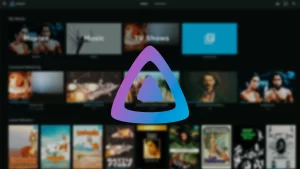Driving new business is tough if you’re buried in the depths of the internet. The good news is there are plenty of ways a company can increase its Google rankings for free. Yes! It’s critical to have a comprehensive digital marketing plan in this increasingly mobile world, and utilizing free tools and smart techniques to elevate visibility is an excellent way to propel business goals.
SEO Still Rules
How’s your Search Engine Optimization (SEO) game? SEO should be your focus when it comes to techniques on how to increase your Google ranking for free. Why? Because it’s still vital to global commerce and is a primary component of effective digital marketing. And getting it right doesn’t have to be expensive. It just takes some strategic thinking, effort, and valuable tools and techniques.
Ready to boost your website’s SEO? Let’s get started.
20 Simple Ways to Increase Your Google Rankings for Free
We will now discuss 20 easy ways to increase your Google rankings for free. These techniques will guide you to position one without spending a dime.
1. Improve Your Keywords
The more targeted your keywords are to your particular niche, the better. Utilizing targeted personalized keywords will help you to rise above competitors and strain out the more generalized content. When figuring out how to increase your Google ranking for free, here are two top tools to improve your keywords:
Google Trends — showcasing the latest stories the world is talking about. You can enter a term or a topic and then use that data to tell the most effective business stories for your products and services.
Google’s Keyword Tool — this free tool from Google AdWords produces the most relevant keywords based on particular words or phrases related to your products and services.
2. Create New Blog Content Often
Don’t let your site get stale. You can increase your website visibility for free when you publish new content online on a regular basis. You can even explore Google Trends for ideas on new blogs for hot topics related to your industry. Make sure to intersperse your keywords strategically throughout the blog, but not so much that it is garish and unreadable. You want them to keep coming back for more.
3. Include Internal Links on Your Site
Another great technique to increase your Google ranking for free is to ensure you have a good amount of internal links on your site. Doing so helps Google and other search engines better understand how your pages relate to one another. From linking one blog to another or linking words or phrases on your blog to your services page, internal links are quite powerful.
4. Make Your Articles & Blogs Easily Shareable
Don’t let an opportunity go by for your customers and fans to share your content. Make sure to include social share icons when you place new articles, blogs, new product announcements, and other valuable information on your site. Doing so helps with exposure to new audiences and indirectly increases your rankings by getting more inbound clicks to your pages.
5. Regularly Maintain Your Site and Fix Broken Links
Nobody likes those dreaded 404 errors. Maintaining your site and keeping it as clean as possible is essential by fixing broken links and deleting outdated and irrelevant content. Monitoring and managing your site health can go a long way to maintaining relevancy and keeping your site appealing and user-friendly. It doesn’t take much to turn off a customer for good.
6. Include a Unique Title Tag for Each Page on Your Site
Feature appropriate keywords in title tags and write them for every page. Title tags should be up to 70 characters max. Use your words wisely, and Google can better comprehend what is on your site.
7. Optimize Images and Other Media on Your Site
Yes, you should think about SEO regarding images and other media too. It is probably not the first thing that comes to your mind, but that doesn’t make it any less important. Title your photos, infographics, videos, and other media with relevant words and phrases, and write descriptive alt tags. While reviewing everything, ensure all media is formatted correctly and uploads quickly. If your website is still in the dark ages and takes too much time to load, it’s time to update.
8. Understand and respond to Google’s new algorithms
Google continuously updates its algorithms; understanding these changes is crucial for SEO. In 2023, Google focused more on “helpful” content, which means content created for humans, not search engines, is relevant to the primary topic of the website, made by authoritative creators, and displays a deep knowledge about the topic.
9. Use AI content and content writing software
Despite Google’s updates to combat auto-generated content, AI content is becoming more popular. Marketers can use these AI tools to speed up their content workflows and create original, quality content. These tools can help generate content briefs, outlines, and ideas that do not sacrifice the originality of content.
10. SEO automation
SEO tasks are becoming increasingly automated thanks to advanced software platforms and tools. For example, keyword research tools can automate tasks that once required a lot of manual work. Site auditing and monitoring platforms can automatically detect website changes and technical issues.
11. Consider changes to CTRs by SERP positions
With endless scrolling now available on mobile and desktop, users are more likely to scroll through multiple pages of SERP results to find the content they want, which means that being on page two or three will have more benefits than it once did, thanks to endless scrolling.
12. Optimize your product pages
As Google continues to reward long-form, informative content, pages like product pages can benefit from providing more helpful details. Think of questions that users may want to be answered about the product before they purchase, and provide that information on the page.
13. Conduct SEO competitor analysis
Looking at the thought leaders in your industry can help you understand what types of content will rank. You can use SEO competitor software to compare competitors’ content, backlinks, domain authority, and more.
14. Prepare for less crawl frequency
As part of Google’s sustainability initiatives, it has been considering reducing the frequency with which it crawls web pages, which means it may take longer for Google to notice website changes. So it’s best to optimize your content from the start.
15. Optimize user experience (UX)
Good UX is becoming more and more important for SEO. The structure and design of your website, the speed of your pages, and the ease with which users can navigate your site can all impact your SEO. Unfortunately, I ran out of time before I could find a detailed source about the importance of user experience in SEO for 2023. However, based on the ongoing trends and Google’s emphasis on user-centered design, it’s safe to assume that good UX will continue to be a prominent SEO factor in 2023.
16. Understand and adapt to Google’s Multitask Unified Model (MUM)
MUM is designed to understand complex queries and languages better. Ensuring your content is clear, concise, and accurately answers user queries is vital. Try to develop comprehensive content that provides in-depth information on your topic.
17. Embrace AI in your SEO strategy
AI is becoming increasingly important in creating and optimizing content. Use AI tools to analyze your content, suggest improvements, and even generate content ideas. However, remember to focus on creating human-centric content rather than just optimizing for search engines.
18. Focus on E-E-A-T (Experience, Expertise, Authoritativeness, Trustworthiness)
Google is placing more emphasis on E-A-T as part of its algorithm. Ensure your website and its content demonstrate your expertise and credibility, which can be achieved by producing high-quality content, citing reliable sources, and having a clear and accessible privacy policy and about page.
19. Pay attention to link building and backlinks
High-quality backlinks continue to be a strong ranking factor. Consider implementing a strategic link-building plan, including reaching out to non-competitive websites in your industry for potential linking opportunities, which is a highly effective way to increase your Google Rankings for free.
20. Prioritize Core Web Vitals and user experience
Core Web Vitals, a set of metrics related to speed, responsiveness, and visual stability, is a significant ranking factor. Ensure your website is fast, responsive, and provides a great user experience on desktop and mobile devices.
Bonus Material! Free SEO Tools to Increase Your Rankings At No Cost
Yes, Google Trends and Keyword Tool are probably the biggest players in the game, but there are others that you can take advantage of as well. Depending on your needs, one of these could be your favorite. When you are finding out the best way to increase your Google ranking for free, check these out:
Screaming Frog — useful for finding broken links, oversized files/pictures, duplicate info, and more.
BROWSEO — just enter your URL, and it displays basic, relevant SEO info.
Rank Checker — this tool from SEO Book shows you just where your site stands and gives you various tips to escalate your rankings. You can also install it on your toolbar for easy access.
GTmetrix — find out your speed score for specific URLs. Slow speeds make users flee! GTmetrix will also give you a list of improvement options, such as resizing images.
Responsive Design Test — to keep your smartphone and other mobile device users happy, test your pages with this handy tool. Your ranking will improve when it is easily accessed and looks awesome on all types of devices.
Ubersuggest – This tool, created by Neil Patel, can help with keyword research, backlink data, content ideas, and more. Ubersuggest provides a list of keyword ideas based on what you’ve entered, information about the competition level, and the approximate number of searches the keyword has.
SEO Minion – TA free Google Chrome extension that assists you in daily SEO tasks such as analyzing on-page SEO, checking broken links, SERP preview, and more. It can be particularly useful for quick analysis and checks.
Google Trends – This isn’t a new tool, but it’s still very popular and free. Google Trends allows you to see the latest trends, data, and visualizations from Google and find out what’s trending near you right now. It can be useful for identifying trending keywords and developing content around what people are currently interested in.
Answer The Public – This tool uses suggested searches from Bing and Google to create a visualized search cloud. It’s a fantastic tool for content creation, as it gives you a peek into what people are looking for regarding a particular keyword.
MozBar – This Chrome extension lets you get instant SEO insights about different websites or search engine result pages without leaving your web browser. You can quickly assess the domain authority and page authority of any site or page.
Flipboard – While not a traditional SEO tool, Flipboard can be used for content curation and distribution. Creating a digital magazine on Flipboard allows you to collate relevant articles and content in one place, which can then be shared with your audience., which can help you build a reputation for sharing quality content, which can indirectly boost your SEO by attracting more traffic and potentially earning backlinks.
Ranking Up for Increased Sales
Now that you’ve discovered how to increase your Google rankings for free, you can broaden your reach, optimize your site, and boost sales. With some effort and a determination to make your site the best that it can be, visibility (and legitimacy in Google’s eyes) can set you on a trajectory to accomplish aggressive sales goals.
For more information on how you can boost your business online, follow our blog here. Data Fidelity provides free marketing tips that uncover the best way to grow your business. Or, if you want direct assistance with your SEO efforts, check out our SEO services. There’s a reason that Clutch named us one of the Top SEO Companies.





